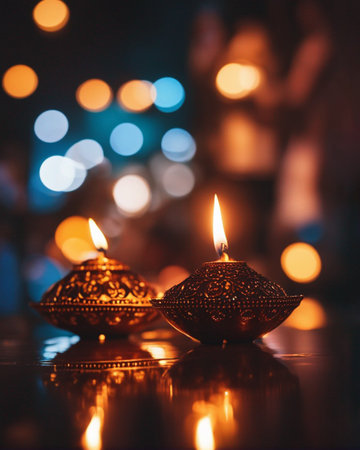Introduction to Panchatatva: The Five Elements in Indian Philosophy
India’s rich spiritual and philosophical heritage has always emphasised the symbiotic relationship between nature and human life. At the heart of this wisdom lies the concept of Panchatatva, or the five essential elements—Earth (Prithvi), Water (Jal), Fire (Agni), Air (Vayu), and Space (Akash). Each element is not only revered in Indian philosophy but also finds a tangible presence in traditional Indian homes, shaping both lifestyle and décor. These elements are considered the foundational building blocks of all creation and are deeply interwoven into rituals, architecture, and daily practices across the country. In Indian households, the Panchatatva guide everything from vastu shastra (traditional architectural science) to everyday customs, reflecting a holistic approach towards harmonious living. Understanding their significance helps us appreciate how every corner of an Indian home is thoughtfully designed to maintain balance and invite positive energies, making these ancient principles as relevant today as they were centuries ago.
Cultural Importance of Panchatatva in Indian Homes
In traditional Indian homes, the concept of Panchatatva—the five fundamental elements of Earth (Prithvi), Water (Jal), Fire (Agni), Air (Vayu), and Space (Akash)—holds immense cultural significance. These elements are not merely symbolic; they are deeply interwoven into everyday life, rituals, and the ethos of Indian society. The harmonious integration of these natural forces reflects India’s ancient wisdom that emphasises balance with nature and a holistic approach to well-being.
Integration in Daily Life and Rituals
From the architecture of homes to daily practices like cooking, cleaning, and worship, the Panchatatva are respected and invoked regularly. For instance, earthen pots are used for storing water to maintain its purity and coolness, representing Prithvi and Jal. Lighting a lamp or diya during prayers symbolises Agni, which is believed to purify the environment. Windows and open courtyards allow Vayu (air) to circulate freely, while Akash (space) is preserved through uncluttered rooms and high ceilings.
Examples of Panchatatva Integration
| Element | Representation in Indian Homes | Common Ritual Usage |
|---|---|---|
| Earth (Prithvi) | Clay floors, mud walls, terracotta décor | Rangoli on ground during festivals |
| Water (Jal) | Pots, indoor water features, tulsi plants with water bowls | Abhishekam (ritual bathing of deities) |
| Fire (Agni) | Kitchens with traditional chulha, diyas in every room | Aarti and Yagna ceremonies |
| Air (Vayu) | Open courtyards, ventilated windows, wind chimes | Fanning sacred flames during puja |
| Space (Akash) | High ceilings, open layouts, skylights | Sacred chanting reverberating through space |
Panchatatva: A Way of Life
The deliberate presence of these elements in Indian households serves as a constant reminder of the interconnectedness between humans and nature. This age-old tradition nurtures a sense of harmony within the home while fostering respect for environmental cycles. In contemporary times as well, many Indians strive to integrate Panchatatva principles in home design and daily routines—ensuring that modern living remains rooted in cultural values that cherish balance and sustainability.
![]()
3. Traditional Architectural Principles: Vastu Shastra and Panchatatva
Vastu Shastra, the ancient Indian science of architecture, is deeply rooted in the concept of Panchatatva — the five fundamental elements: earth (Prithvi), water (Jal), fire (Agni), air (Vayu), and space (Akash). These elements are believed to be the building blocks of all creation, and their harmonious integration within a home is thought to ensure health, prosperity, and positive energy for its inhabitants.
According to Vastu Shastra, each element is associated with specific directions and zones within a house. For instance, earth is linked to the southwest, providing stability; water aligns with the northeast, encouraging flow and abundance; fire is positioned in the southeast to energise and support vitality; air occupies the northwest, fostering movement and communication; while space dominates the centre, signifying openness and spiritual growth. The careful orientation of rooms—such as placing kitchens in the southeast and prayer areas in the northeast—follows these elemental guidelines to maintain equilibrium.
In traditional Indian homes, these principles extend beyond mere superstition or ritual. They influence practical decisions in layout, construction materials, ventilation, and even décor choices. By respecting the natural energies represented by Panchatatva through Vastu-compliant design, homeowners aim to create spaces that are not only aesthetically pleasing but also nurturing for body, mind, and soul. This holistic approach continues to shape Indian home decor today, blending time-honoured wisdom with contemporary living.
4. Role of Each Element in Home Decor and Design
Traditional Indian homes are thoughtfully designed to embody the Panchatatva—Earth (Prithvi), Water (Jal), Fire (Agni), Air (Vayu), and Space (Akash)—in both structure and aesthetics. Each element is represented through specific materials, architectural choices, and decorative accents, blending spiritual significance with practical comfort. Below is an overview of how each element finds expression in Indian home décor:
| Element | Manifestation in Home Décor | Cultural Significance |
|---|---|---|
| Earth (Prithvi) | Use of natural materials like clay tiles, terracotta pots, stone flooring, mud walls, wooden furniture | Symbolises stability, grounding energy; connects inhabitants to nature |
| Water (Jal) | Ponds, indoor water fountains, uruli bowls with flowers and floating candles, tulsi plants near entrances | Represents purity and prosperity; enhances calmness and positive energy flow |
| Fire (Agni) | Diyas, oil lamps, agarbatti stands, use of warm colours in textiles and wall art, traditional fireplaces or havan kunds | Signifies transformation and vitality; wards off negativity and purifies space |
| Air (Vayu) | Strategic placement of windows for cross-ventilation, jharokhas (overhanging enclosed balconies), open courtyards | Promotes health through fresh airflow; fosters openness and liveliness |
| Space (Akash) | Courtyards, high ceilings, uncluttered rooms, incorporation of prayer alcoves or meditation zones | Encourages spiritual growth; provides sense of expansiveness and harmony |
Practical Applications in Home Design
The influence of Panchatatva can be observed from the foundational layout to the smallest decorative detail. Earthy floors remain cool in Indian summers, while water features placed near entrances invite abundance. Diyas are lit daily in pooja rooms to invoke Fire’s transformative power. Air is channelled through jaalis (latticed screens) that filter sunlight and enhance privacy. Space is respected by designing multipurpose verandahs or aangan as communal gathering areas. This holistic approach ensures every home resonates with the timeless wisdom of Indian culture while creating an inviting ambience.
5. Modern Interpretations: Blending Panchatatva with Contemporary Home Decor
In the dynamic landscape of modern Indian homes, the ancient wisdom of Panchatatva continues to influence interior design in subtle yet profound ways. While traditional homes paid homage to the five elements through architectural layout and materials, today’s urban dwellings reinterpret these concepts, ensuring that cultural authenticity is not sacrificed amidst contemporary aesthetics.
Innovative Use of Natural Elements
Modern Indian home decor often incorporates natural materials such as wood, stone, and clay to represent earth (Prithvi). Open windows and well-ventilated spaces are designed to invite air (Vayu) and sunlight (Agni) into the living area, creating a sense of harmony with nature. Water features like indoor fountains or small water bowls are thoughtfully placed to embody the element of Jal, while carefully curated lighting schemes reflect Aakash, or space, enhancing the ambience and promoting positivity.
Fusion of Tradition and Minimalism
The Indian penchant for vibrant colours and intricate patterns is now being balanced with minimalist sensibilities. Earthy tones, organic textiles, and handcrafted decor items serve as subtle nods to Panchatatva without overwhelming the senses. For example, jute rugs and terracotta planters blend seamlessly with sleek furniture, allowing homeowners to honour tradition within a cosmopolitan framework.
Cultural Authenticity in Urban Lifestyles
Even in compact apartments or high-rise buildings, designers are finding creative solutions—such as vertical gardens for earth, diffusers for air, strategically placed diyas for fire, miniature fountains for water, and open-plan layouts for space—to ensure that the spirit of Panchatatva remains alive. This thoughtful integration speaks to a uniquely Indian approach: embracing progress without losing sight of one’s roots.
Ultimately, the contemporary reinterpretation of Panchatatva in home decor reflects an evolving Indian identity—one that respects ancient traditions while confidently engaging with global design trends. Through this harmonious blend, modern Indian homes continue to radiate warmth, balance, and positive energy.
6. Incorporating Panchatatva for Wellbeing and Positive Energy
In traditional Indian homes, the integration of Panchatatva—the five fundamental elements of Earth (Prithvi), Water (Jal), Fire (Agni), Air (Vayu), and Space (Akash)—is not merely a matter of aesthetics, but a profound approach towards holistic wellbeing. When spaces are designed with these elemental principles, they cultivate an environment that nurtures physical health, emotional balance, and spiritual growth.
Physical Wellbeing through Panchatatva
The careful placement and selection of home decor elements that represent each Tatva can positively influence the body. For instance, incorporating natural materials like clay, wood, or stone (Earth) promotes grounding energies. Flowing water features or indoor plants enhance humidity and freshness, supporting respiratory health. Adequate sunlight and lamps (Fire) invigorate vitality and cleanse spaces of negativity.
Emotional Harmony in Daily Life
Panchatatva-inspired interiors foster emotional stability by harmonizing the senses. The gentle movement of air from open windows or fans soothes the mind and uplifts moods. Thoughtful spatial arrangements allow for seamless energy flow (Space), reducing stress and fostering a sense of openness in family interactions.
Spiritual Upliftment and Positive Energy
Beyond the tangible, Panchatatva-based decor is deeply intertwined with Indian spiritual beliefs. Sacred corners adorned with diyas (Fire), Tulsi plants (Earth), water bowls, incense (Air), and open prayer spaces (Space) create sanctuaries for meditation and worship. These arrangements invite positive vibrations, purify the environment, and help householders align their inner energies with cosmic forces.
By mindfully integrating Panchatatva into home decor, Indian families can transform their living spaces into havens of wellbeing—where every element contributes to physical health, emotional peace, and spiritual prosperity.

